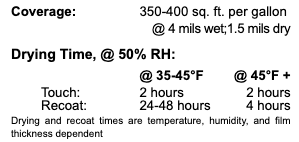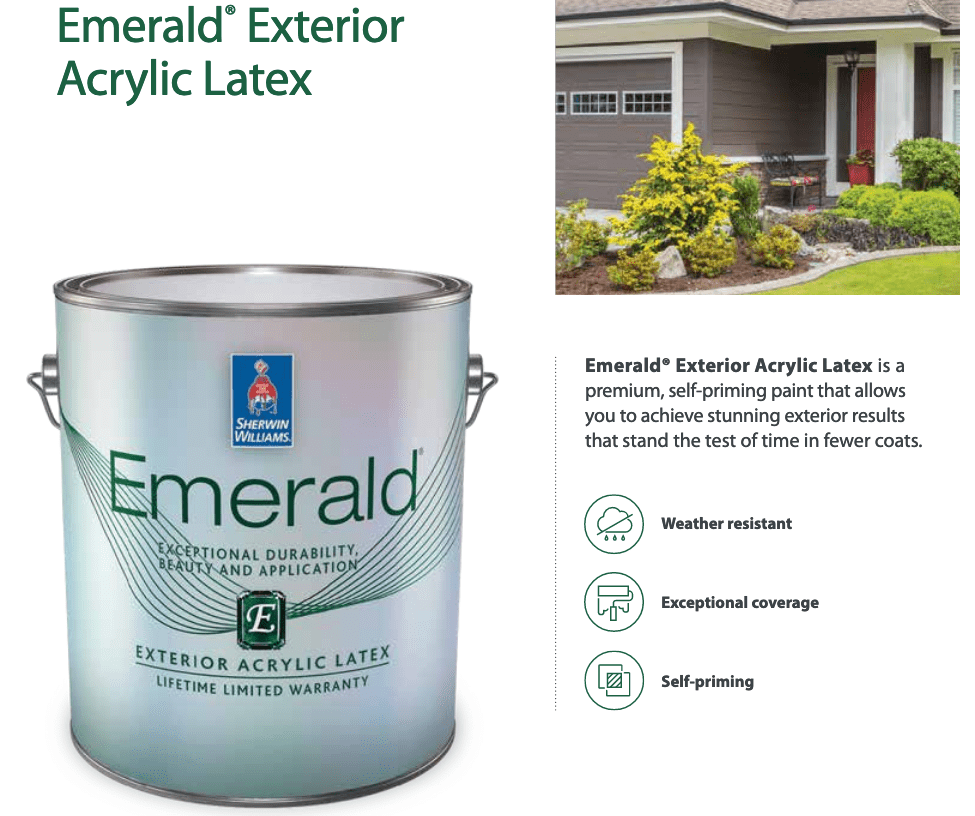1 Coat Versus 2 Coats - Exterior Painting (Must Read) | Great Plains Painting
When we’re estimating a project in Overland Park, sometimes people ask the question:
Are you doing two coats?
Seems like a simple enough question, but the answer can vary depending on the painter you ask and their definition of two coats.
The Specification
We use primarily Sherwin Williams coatings and we’ll look at their product specifications sheet for SuperPaint. SuperPaint is likely the most widely used residential exterior coating in Overland Park.
Sherwin says:
Coverage: 4 mils thickness wet; 1.5 mils thickness dry
Recoat time @ 45°F: 4 hours
straight from the Sherwin Williams spec

Application Via Brush and Roller
If application is done via brush and roller, two coats are absolutely required to build up the correct mil thickness. So if you’re receiving an estimate from someone and they’re telling you they are doing two coats, ask them if they’re brushing and rolling the whole house. There is absolutely no way to get as thick or uniform a coating in one pass with a brush or roller versus one pass with airless spray equipment.
On interiors for example, where we brush and roll all drywall, we always do two coats. One coat doesn’t get the color or sheen built up and normally you’re able to see the old color or the base drywall through the first coat.
On exterior projects we often brush and roll the detail work, like the trim, if we can’t get the required detail with a sprayer. On the surfaces we brush and roll, often two coats are required here as well.
Normally on a brush and roll project, it will take an entire day to get the first coat finished. This means that by the time the crew works around the house to where they started, the 4 hour recoat time is met and they are able to begin applying the second coat if it’s not time to clean up for the day.
Airless Spray Equipment
We use airless spray equipment to apply exterior coatings. With a sprayer and the high tech low-pressure tips available today the coatings are atomized at pressure into fine particles. With this equipment, we are able to apply AT LEAST a 4 mil thickness coating wet on the first coat. Often we find that we average about a 6 mil thickness wet coating via the equipment we use.
If we wanted to do a second coat via the airless sprayer, the paint would need to cure 4 hours between coats. Because we apply paint at greater volume and rate with a sprayer than with a brush and roller, normally we can coat all the siding in half the time (the very reason spray equipment was invented in the early 1950s). If we wanted to apply a second coat, we’d then typically need to let the house sit overnight, and apply the second coating the next day.
Is Brush and Roll or Airless Sprayer Better?
This again seems to be a matter of opinion and depends on who you ask. What we can say with accuracy is that more paint is applied through airless sprayers today than via brush and roller. In my opinion, having brushed and rolled AND run hundreds of gallons of paint through airless sprayers I will say that for exteriors, sprayers are the way to go. In my experience, when I spray exterior siding I get a coating that would take three coats via brush and roller to replicate. And when the prep work is completed properly the look of the finish via sprayer application is much nicer.
Sprayers became mainstream because it allowed painters to work more efficiently. Instead of doing 1 house in 2 weeks, with a sprayer they could do 1 house in 1 week say on average. It’s also reduced the cost to homeowners. Occasionally we do projects that require we apply 2 coats to an exterior via brush and roller. Due to the increased labor time that takes the cost is significantly more. Oftentimes an 80% to 110% increase depending on the project.
The Spray and Backroll 2 Coat
One thing we’ve seen a lot over the last couple years is “companies” or craigslist painters claiming to be applying two coats but having ludicrously low prices . When we’ve recommended homeowners investigate further, what they determine is that the “companies” say they’re spraying and backrolling and calling that two coats.
First off, there’s nothing wrong with spraying and backrolling. It’s a technique we use when we’re dealing with a porous substrate and we need to push the paint down into the pores with a roller. The sprayer is great at delivering material to the surface, but is a fail when it comes to penetrating any porous substrate.
Secondly, spraying and backrolling isn’t what we’d call a two coat system. Because, no one we’ve encountered sprays the house, then waits 4 hours, then backrolls it. That’s what you’d have to do to meet Sherwin’s specs for a 2 coat system.
Airless Sprayers Sound Great, But Are There Any Downsides
As with anything yes there are. Spraying an exterior requires tight control of protecting what we don’t want to get paint on (i.e., windows, concrete, etc…). The prep work involved to set a house up to spray is a little more complex than with brushing and rolling. So if you’re hiring a company and they will spray, check em out online and make sure you don’t see reviews saying they got paint where it wasn’t supposed to be.
Also prep is necessary to get a final coating that lasts. As great as sprayers are, if paint is sprayed over an un-prepared surface it’s still going to fail sooner than if sprayed over a properly prepared one. With a brush and roller you are pushing the paint down into any porous substrates which helps the paint achieve a good bond. Sprayers don’t push paint down into any pores. Typically we try and handle porous surfaces by getting them scraped of loose substrate and applying a bonding primer (with a brush or roller). We love Sherwin’s PrimeRX bonding primer. Once prepared correctly, application via the sprayer is excellent.
On porous siding we opt to spray and backroll. The spray delivers the material to the surface via the airless spray equipment and right behind him the roller hits the surface with a roller or back brush to work the material down into the pores.
I Still Want Two Coats of Exterior Paint - Sprayed or Rolled
If you want two coats, we are happy to apply them. Two coats with the product we’ve been discussing, Sherwin Williams SuperPaint, will increase the cost of the project significantly. There must be at least a 50% to 70% increase in the number of gallons of paint required. The second coat normally uses slightly less paint than the first coat. And the additional labor also adds to the cost.
We can achieve the same thing as two coats of SuperPaint by looking at another product. It we look at Sherwin Williams Emerald or Duration (or similar lines from other manufacturers) the manufacturer guarantees that product with one coat. Let’s look at the Emerald specs:
Coverage: 5.3-6.4 mils thick wet; 2.1 to 2.6 mils thick dry
Apply 2 coats on new, bare substrates or 1 coat for repaint
straight from the Sherwin Williams spec


Emerald is significantly more expensive per gallon than SuperPaint, but we find that apply 1 coat of Emerald still saves you money over 2 coats of SuperPaint. And you’re achieving the same end result.
Of course we’ll paint anyone’s house however they want it painted, but if Sherwin will put their Lifetime Limited Warranty on 1 coat of that product, why would you not save the money and choose that route over 2 coats of SuperPaint.

Hopefully This Information Helps You
I’ve tried to offer information based on manufacturers specs to help inform you about what a two coat project really is. And, inevitably sprinkled in some of my opinions. When I was first estimating projects in Overland Park and all of Kansas City, this “are you doing two coats” question came up a few times, and when I’d honestly say No, the customers would tell me that the other so-and-so painter was for the same price I was quoting. That made no sense to me so I investigated it by talking to all my paint manufacturer reps and some of the other painting companies around town.
From what I’ve seen, no one who is painting exteriors with modern equipment (sprayers) is doing what would be specified a true two coat (applying 1 coat via sprayer, letting the paint cure over night and apply another coat the next day). There aren’t a lot of companies left who do brush and roll only, but the few who are are definitely doing two coats, and they should be. And then there are some painters who are calling a spray and backroll two coats either because they don’t understand the spec or because they’re being mis-leading.
Hopefully after reading this you’ll have an idea of what’s what and be better informed to make a decision about who to hire. You can always talk to our team about two coats versus one and if you come up with a question or concern we haven’t seen yet, we’ll get our paint reps involved to get it answered!